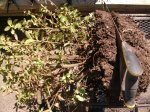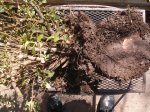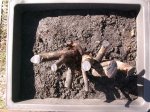It is a perfect analogy. A perfect analogy on why it is wrong. You are an animal, not a plant.
Plants do not heal.
Thin-barked or not. Azalea or not. Japanese tradition or not.
Look. This is an old way of thinking about how plants heal. You give exactly the argument people always used to treat wounds on plants to make them heal.
Then, some people actually went out and did experiments to see if this treatment actually works rather than just thinking it works on plants because we think it works on humans.
Turns out they found out empirically that it doesn't. And we now also know why. Plants don't heal their wounds. They compartmentalize them.
That's why almost all professionals, who give advances in horticulture a thought, stopped sealing cuts decades ago. Yet bonsai people still do it, because Japan. They still make the fallacious arguments.
I am not saying a treatment for tree wounds can never exist. But the traditional way to seal up wounds impairs the processes trees use to heal their wounds and the arguments used are contrary to evidence.
And even trees did heal like humans, when at significant risk of infection, you wouldn't close up all human wounds either. And even if you think sealing up is best, you still have to prove the treatment is correct through experiment and through underlying knowledge about the processes at hand.
In both cases, in plants, these say nay to sealing wounds.
How the hell do you think you know you have to seal a plant wound within 30 seconds? It's just made up. What is happening in the plant that happens within 30 secondss of the cut being made that makes these 30 seconds so crucial? And how do you know this is so?
Sources:
Wound dressings: results of studies over 13 years, Shigo, Alex L., and Walter C. Shortle.
A case can be made about preventing moisture loss on some plants when you cut them at the wrong time of the year, through even there it can be argued that letting it bleed excessively is better than sealing.. But better not to cut them at all. In that case, you can apply a bit of resin that will only last for days.
The only treatment for these wounds that will be beneficial in the future is to treat wounds by inoculating the wounds with the right microorganisms. Everything else is just treatment for your psyche.
That bonsai master advocate one thing or the other means nothing. They are just guessing or parroting tradition. Bonsai masters make nice trees using their artistic skills. They do not do experiments to establish new knowledge. They have some trial or error going on, but their sample size is too small and they have no controls. You can repeat what they do exactly and get the same results as they get. Obviously doing ineffectual and mildly harmful treatment, namely sealing wounds, does not make it impossible to produce impressive bonsai.
Unless they do a proper experiment they are just guessing. That their tress look nice says nothing.
Bonsai people can't agree on what paste to use either. One swears you need hard stuff, the other soft. Some people use silicon. Others use special bonsai paste. Why do they all disagree? Because they all make up stuff and it doesn't matter.
If you want to seal up wounds to make yourself feel like you have given your tree a good treatment; go for it. Research certainly does not indicate you are giving it a death sentence.
But for all the good it does, to your conscience as the desire to do something rather than noting is strong, it doesn't do the tree any good.
But someone who doesn't feel this need to seal up stuff, they don't need that advice. They only need to seal up stuff once you plant in their mind the desire to do so.


















